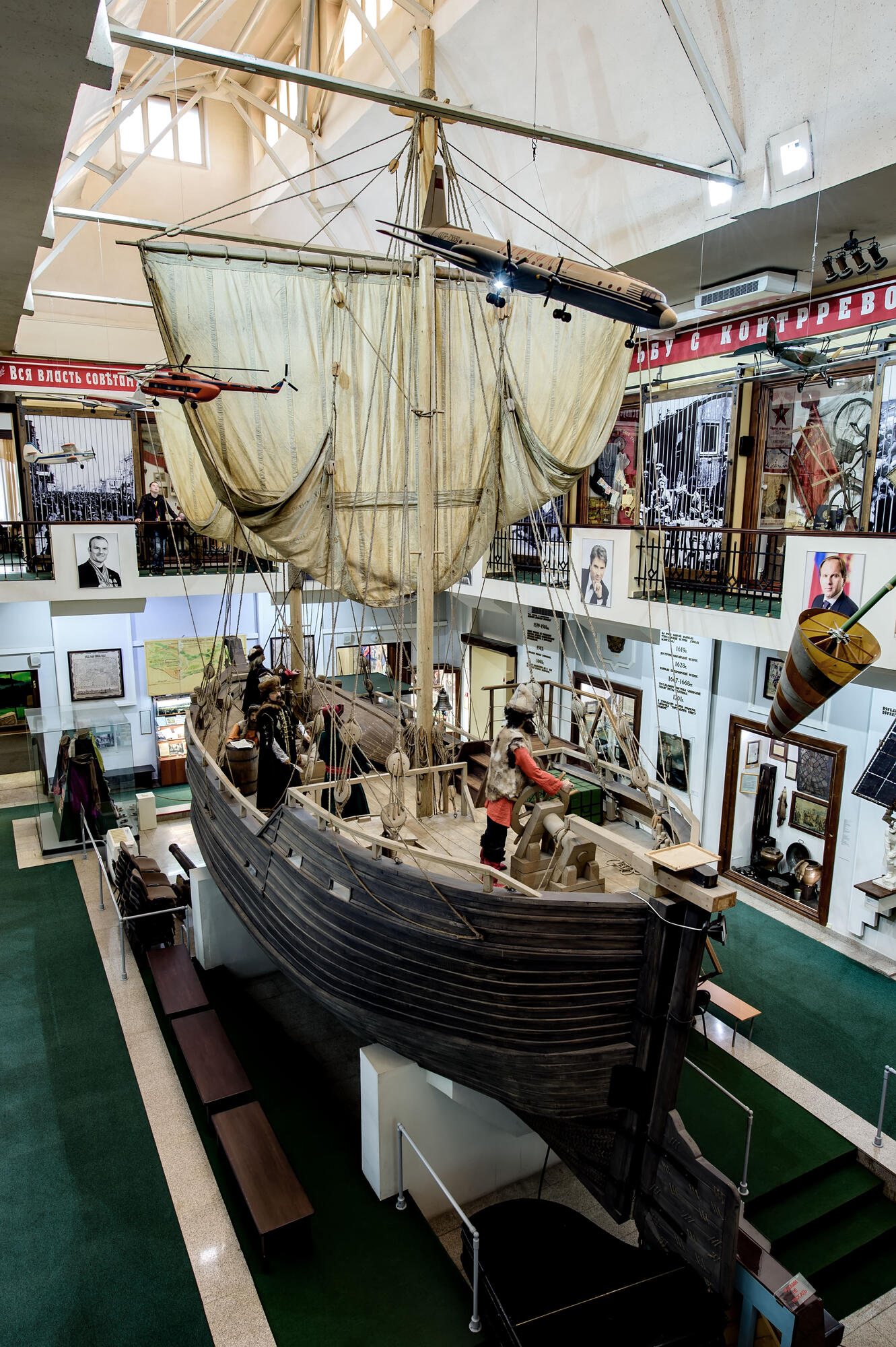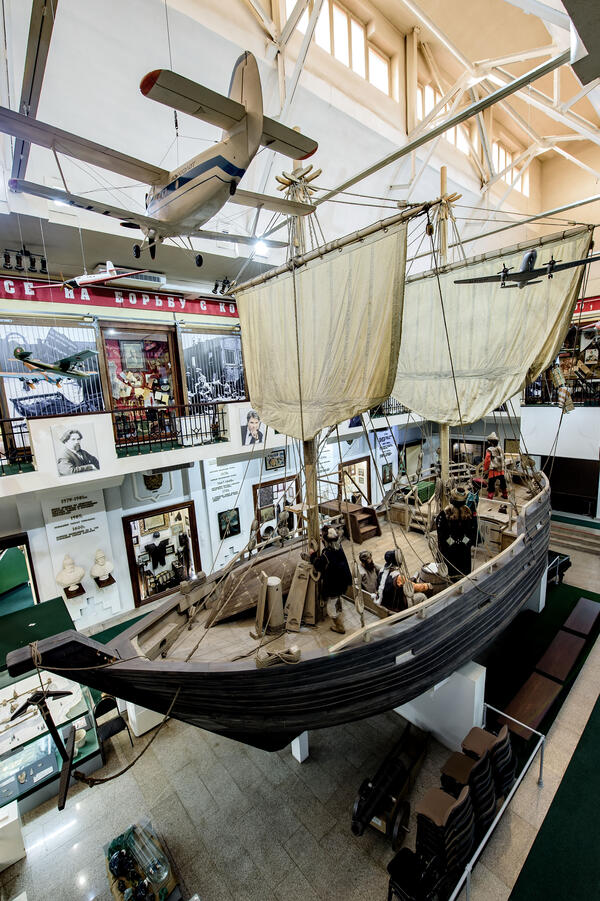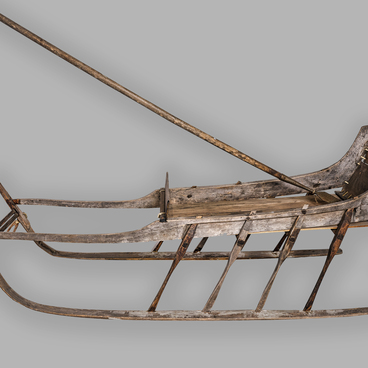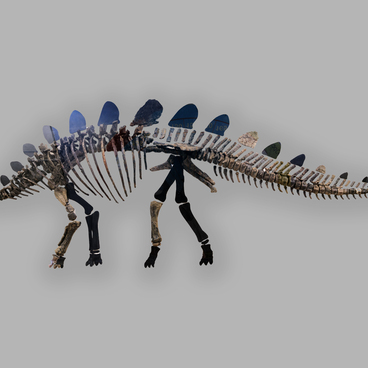A koch is a single-deck sea and river vessel in Northern Russia of the 16th–17th centuries, thanks to which the vast territory of Siberia and the Far East was explored. It was the first Russian vessel with a real rudder instead of a steering oar: the steering wheel appeared later. Other names for the koch are kacha, kochmara and koch’.
There were large and small koch boats — from 16 to 25 meters long and up to 8 meters wide. The koch sailed with oars and sails. The name of the ship might be connected with the word “kotsa” — “ice coat”, i.e. the second ship’s plating located near the waterline, as well as with the concept of “kochevat” (travel) and Norwegian kochman ships, which are mentioned in the Novgorod chronicles.
The koch could carry up to 40 people and lift up to 30 tons of freight. A shallow draft — up to two meters — allowed the koch to sail near the coast, enter rivers, and overcome hauls. The hull of the ship was egg-shaped: rounded outlines made the ship strong, pushing it up and preventing the moving ice from crushing it.
The boat was built without a single nail, using iron brackets. The material for the vessel was larch with sheds of bark. One koch required several thousand iron braces, up to 500 meters of canvas, 2 kilometers of ropes and 2 anchors weighing 100 kilograms. The first koch boats were built by the Pomors (coast-dwellers), then the skill was taken over by manufacturers who traveled beyond the Ural Mountains.
By the mid-16th century, koch boats were widespread in the north of Russia: in Karelia, Mangazeya, Yamal Peninsula, Yakutsk and Yeniseisk. In summer, such ships carried people and cargo, and were used for fishing. In winter, koch boats were parked in the river near settlements and used as dwellings frozen in the ice. In spring, men chopped the ice around the kochi, waited for the ice to clear the river and took the ships out to the open water. In the 18th century, the construction of koch boats was suspended by Emperor Peter I.
For several centuries, koch boats were used by pioneers
who explored Siberia, annexed it to the Russian state, and built ostrog
fortresses along Siberian rivers. Koch boats sailed to the mouth of the Yenisey
from the first half of the 16th century. Traditionally, Cossack Yermak’s
campaign against the Siberian Khanate, which began in 1581, is considered the
beginning of the era of Siberia’s conquest.




